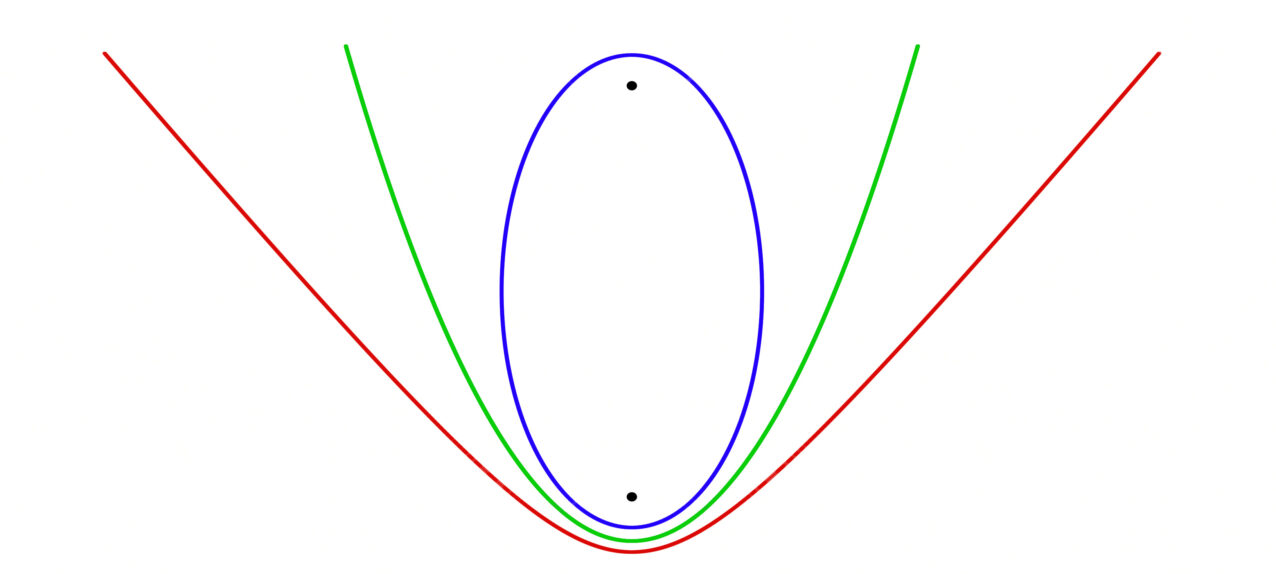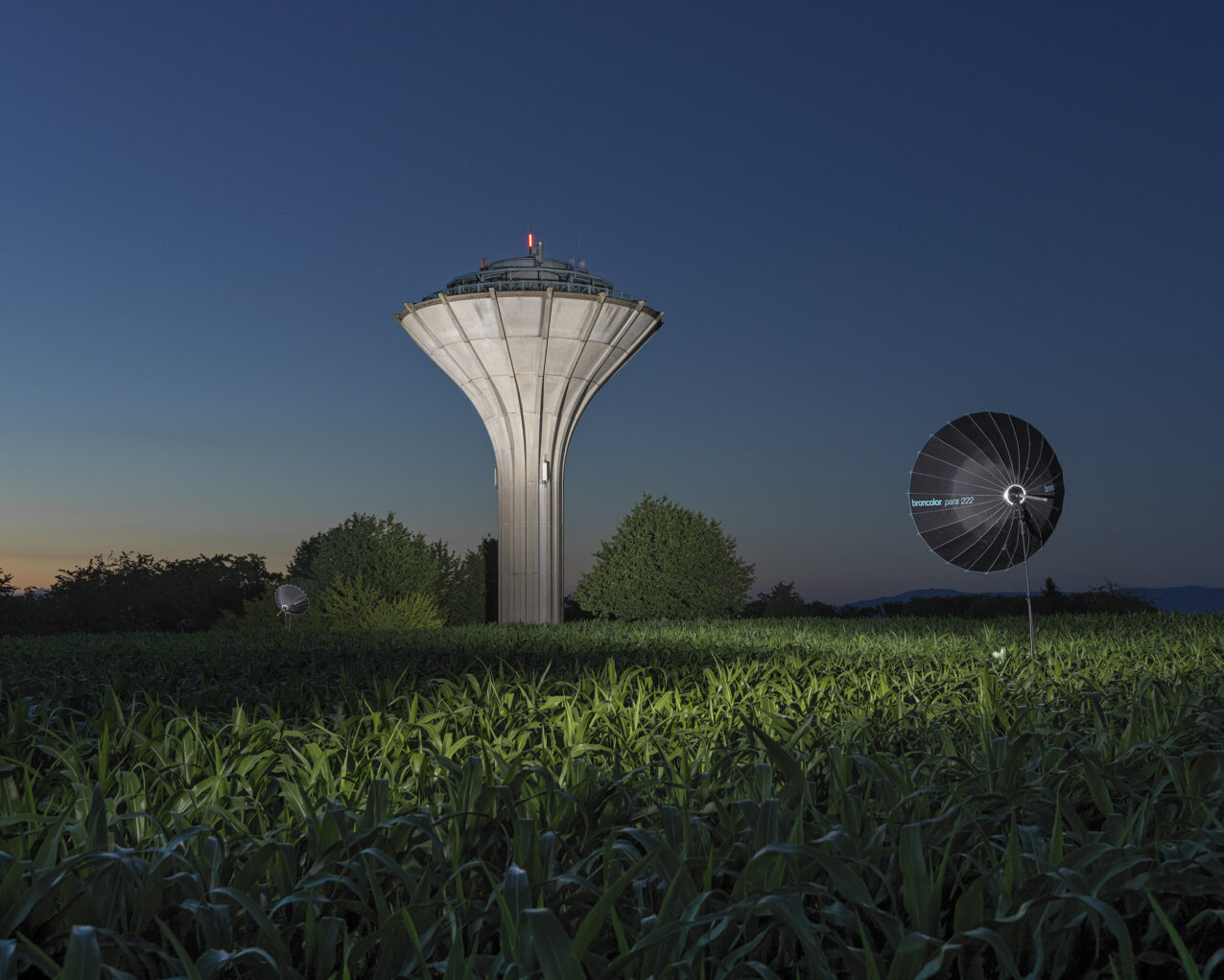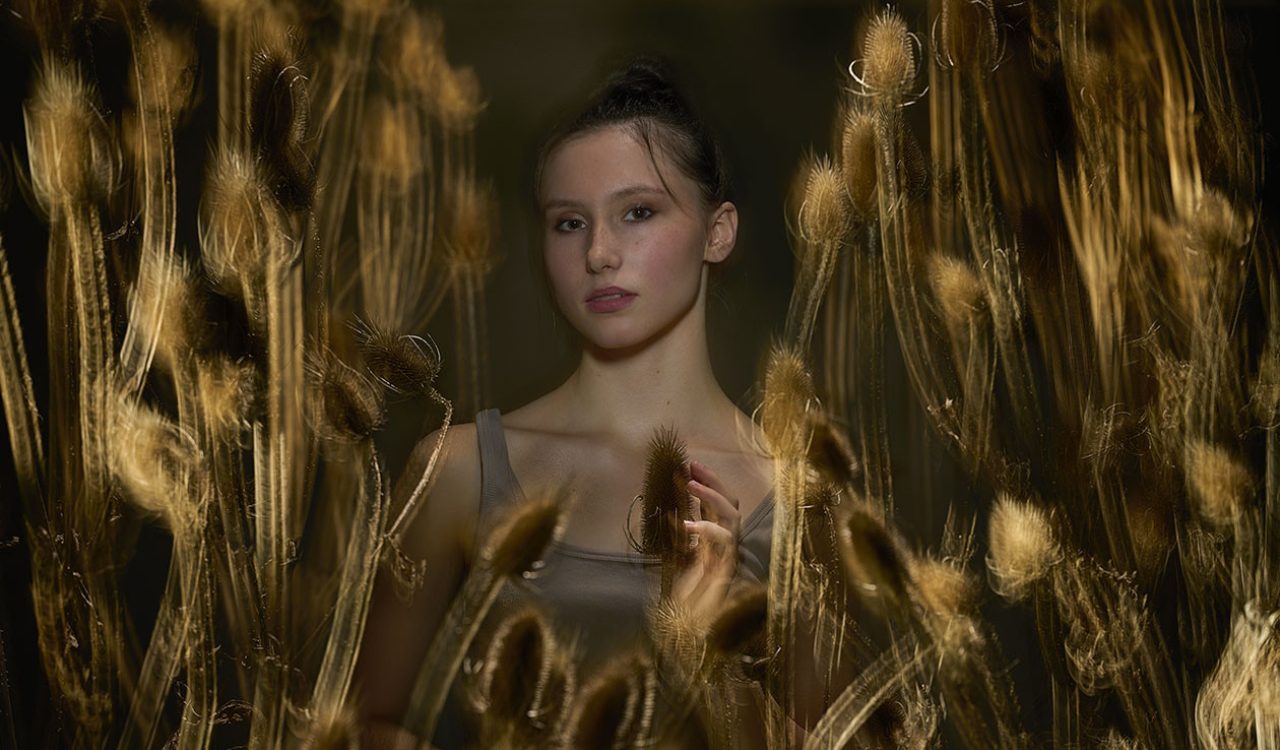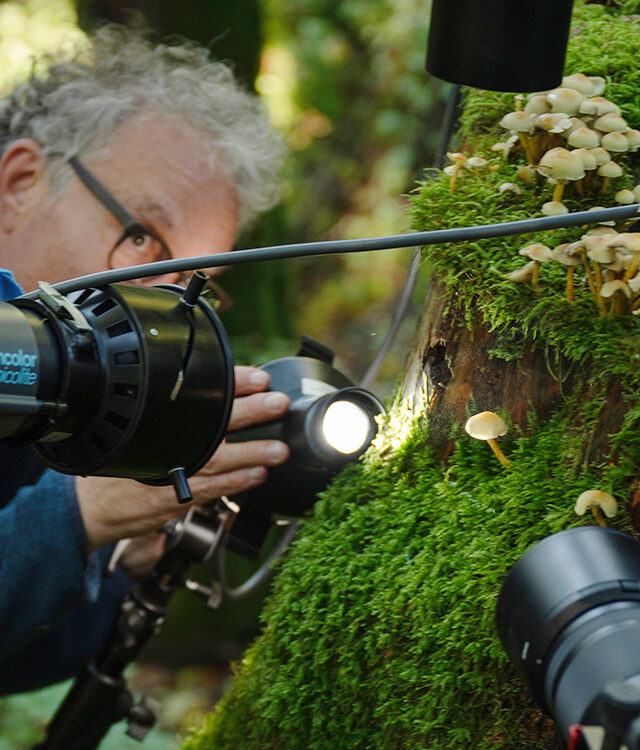Light geometry: reflectors and external flash tubes
To protect against transport damage, it is certainly an advantage if the most fragile components of a lamp (in the case of flash lamps, these are the flash tubes and the modelling lights) are constructively integrated inside the lamp housing. From a lighting point of view, however, things look quite different, which will be explained in the following.
Let us first look at the shapes of reflectors. These follow mathematical rules and can in principle be parabolic (green), elliptical (blue) and hyperbolic (red).

Hyperbolas are not really interesting photographically because they are not curved enough to be able to focus light effectively; at best they make sense as wide-angle reflectors.
The naming of various light formers such as "Reflector PAR" or "Para" suggest that they could be parabolas. And indeed, parabolic reflectors are the most widespread. What distinguishes this shape?

When receiving signals (e.g. from satellites), parabolas are used to optimise the signal strength, as all electromagnetic waves incident in parallel on the surface are reflected to a small point, the focal point F. In the studio, we take the opposite approach: we place a light source at the focal point of the parabola and thus achieve that the light leaves the reflector as parallel as possible. Of course, this can only be achieved approximately, since light sources (flash tubes) are not mathematical points but have a certain spatial extension. In addition, most reflectors are provided with a certain structure that makes the illumination more homogeneous, but at the same time makes the reflector somewhat less precise.
Nevertheless, (focussed) parabolic reflectors remain particularly interesting if a lot of light is to be transported over long distances and with as little loss as possible.

For more exciting insights into the lighting characteristics of para(bolic) reflectors, watch the following how-to video:
https://broncolor.swiss/news/how-to-shoot-white-on-white-portraits-with-the-para
However, parabolic (and all other) reflectors can only work effectively if the light source is as free-standing as possible in the area of the focal point. As can be seen from the illustration above, not only the light rays directed to the front are reflected, but also those that leave the flash tube to the side or even to the rear. Only if these can also be reflected forwards towards the object is optimum illumination and light yield guaranteed.
With the Siros lamps units, broncolor combines both advantages: During transport, a simple, compact standard reflector protects the lighting elements. If this reflector is removed and replaced by a more effective one (e.g. by a P70, as shown here in the picture), the principle of the parabola works perfectly.

With the focusable light elements of a Pulso G or an LED F160, the illumination can even be fine-tuned. Non-focusable lamps (Siros and Unilite) are designed so that the flash tube is always close to the focal point. In all Para models, however, these fixed lamps can also be used optimally, as within a Para the entire lamp (not just the flash tube) can be moved.
According to these comments, the Picolite does not seem to have been optimally constructed, because it apparently has an integrated flash tube:

However, the Picolite, which specialises in small sets, has light shapers tailored to it, which are not based on classic reflection. Instead of a reflector (which has the focal point inside), the Picolite works with lenses whose focal points are located behind the lens. All other light shapers for the Picolite are also optimised for its light geometry.
With a fully focussed Para, it is usually expected that, viewed from the object, the entire reflector inner surface reflects. But of course this is not the case, because the light leaves the reflector parallel at best, but not directed towards the viewer's point of view - this brings us to the last reflector shape: Ellipses.
A parabola has one focal point in the reflector; the second, virtual focal point is infinitely far away. The ellipse, on the other hand, has a real second focal point whose position depends on the chosen curve. I.e. it focuses the light beyond parallelism onto a second focal point. Seen from this point, the entire elliptical reflector appears brightly illuminated.
The ellipse is an obvious choice as a reflector if as much light as possible is to arrive at a given, but unchangeable distance. Lamps in the medical field (e.g. OP lamps) are often elliptical. They are rarely found in photography because, as explained, they are designed for a specific application distance and are therefore not very versatile. Reflection simulations also show that defocusing causes a veritable chaos of rays.
No matter which reflector shape we choose, a mathematical cone shape or a self-made, creative shape: A free, external flash tube ensures that the light can be shaped effectively and that every joule of flash power emitted is guaranteed to reach its destination.








